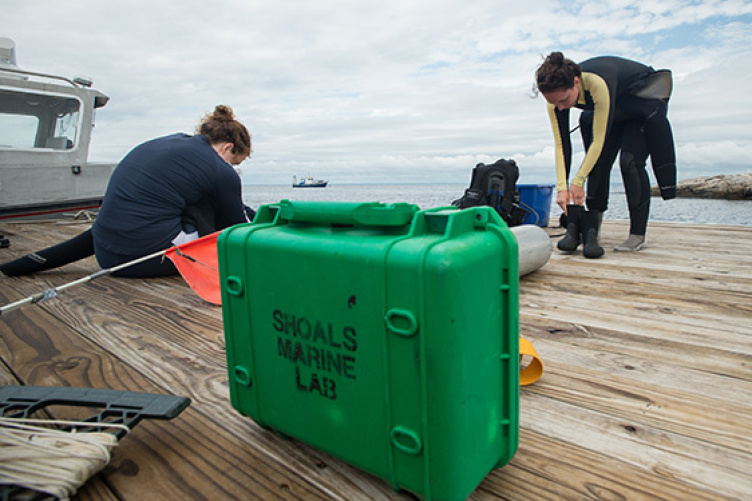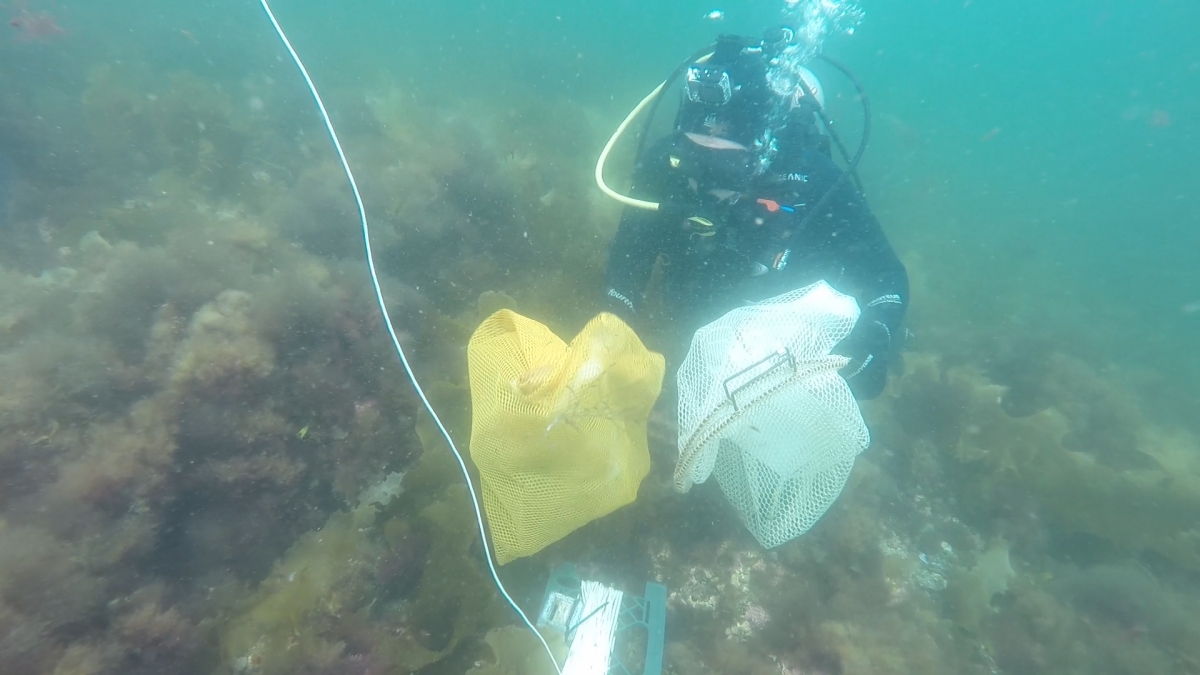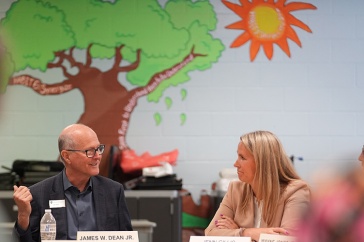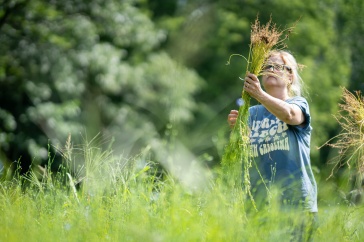
University of New Hampshire diving interns go to great depths for research.
Amber Litterer ’16 and Kristen Mello ’14 have been in over their heads all summer. That’s because they spend a portion of each day under water as diving interns at the Shoals Marine Laboratory on Appledore Island, a 95-acre island in the Isles of Shoals archipelago. Jointly operated by the University of New Hampshire (UNH) and Cornell University, the Shoals Marine Laboratory is rare among marine science research facilities in its focus on providing undergraduate research experiences.
 Appledore Island is home to the Shoals Marine Lab.
Appledore Island is home to the Shoals Marine Lab.
Litterer, a Zoology and EcoGastronomy major in UNH’s College of Life Sciences and Agriculture (COLSA), and Mello, a recent graduate of Zoology from COLSA, are the first interns to be accepted into the brand new Near Shore Ecology Internship. Supported by the Rutman family, this Shoals Marine Laboratory internship provides individuals with skills in diving, research, and the handling of high-tech underwater equipment that differentiate them from others seeking careers in marine biology.
During the ten-week program, Litterer and Mello will be investigating the underwater habitat architecture among the Isles of Shoals and collecting ten species of algae from bays across the various islands, including Babb’s Cove, Haley’s Cove, White Island Cove, Lunging Island Cove, and Gosport Harbor off Smuttynose Island. “Most of the algae we want to collect is present in all of these areas. We’re looking at how unique the structural complexities of each type of algae by examining their surface area,” says Litterer. That surface area, which can be categorized as filamentous or flat, is host to a plethora of invertebrates: isopods, gastropods, amphipods, caprellids, and blue mussels. “The underwater architecture has been changing over time,” says Mello. “We’re now seeing that half of all the species living here are non-native, and we’d like to know what types of invertebrates currently inhabit each algae.”
 Amber Litterer collects algae in Babb's Cove on Appledore Island.
Amber Litterer collects algae in Babb's Cove on Appledore Island.
Under the guidance of their advisor, COLSA's Affiliate Assistant Professor Jennifer Dijkstra, Litterer and Mello are gathering their results to uncover a relationship between the higher degree of surface area complexity in the species of algae and an increased abundance of invertebrates. “The more surface area—or higher fractal dimension—an algae has is directly related to its value as a food source and habitat in which larger predators hide,” says Litterer, who—along with Mello—press their samples in order to conduct a two-dimensional analysis. After the algae have been pressed flat, the interns photograph the samples and measure their surface area. “Lots of studies have been done on underwater habitat complexity, but not in this region,” says Mello, who is excited about contributing to the larger importance of their research. “This is one of the greatest opportunities I’ve had at UNH,” says Mello about making important research connections in marine biology beyond acquiring new, in-demand research skills in the field.
 Kristen Mello prepares an experiment tank back at the lab.
Kristen Mello prepares an experiment tank back at the lab.
Today Litterer and Mello are diving in the crisp waters of the “crib,” a horseshoe-shaped cove off the coast of Appledore Island. They hope to net one of those aforementioned predators—a cunner fish or eel-like rock gunnel—for further observation in the seawater tanks of the lab. “This is a totally immersive experience. We’re constantly in the field and having conversations with faculty and other students about our research,” says Litterer. “Shoals provides an intellectual environment with inspiring professors to help you in all aspects of your work.”



















































